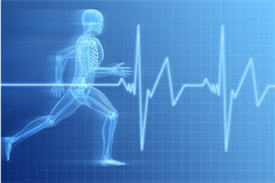 “Experience is only good if you learn from it.”
“Experience is only good if you learn from it.”
Humans are a unique biological system. When placed in the context of defending itself, a human characteristically attacks and defends itself based on a complicated series of generational learning and unique anatomy and physiological constructs. In the initial evaluation, a human does not look very threatening when placed against a tiger or a lion. They are, however, uniquely constructed to fight and dominate their adversary when they adequately utilize themselves as a weapon system.
In this first article in a series, we will introduce the concept of the “Human Weapon System” and evaluate its assets and weaknesses in detail. Although this idea has been popularized in the media for the past few years, Direct Action Medical Network coined and trademarked this phrase in 2004. As physicians/surgeons, we study humans from a unique perspective that few people have the privilege of attaining.
When one looks at the unique physiology and anatomy of humans, the true potential of their ability is still difficult to grasp. Humans engage in physical confrontation in instinctive ways that utilize their anatomy and physiology to overcome conflict. This article looks at these strengths and weaknesses and details them regarding the human’s priorities and how it influences their fight.
 Humans have four essential priorities that, when lost or perfected, determine their survivability when faced with lethal conflict. The first is the brain, the command and control center of the system. The brain is uniquely situated in the body to be protected and to be in a positional relationship with the other functions of the body to remain functioning even in the face of trauma or other injury.
Humans have four essential priorities that, when lost or perfected, determine their survivability when faced with lethal conflict. The first is the brain, the command and control center of the system. The brain is uniquely situated in the body to be protected and to be in a positional relationship with the other functions of the body to remain functioning even in the face of trauma or other injury.
The next is the eyes. Although not much more than an anatomical extension of the brain, and very sensitive as a tissue, the eyes have extraordinary capacity to adapt, heal and serve the weapon system in a variety of environments.
The third priority is the airway. Encased in bone and muscle surrounded by structures that are designed to displace energy, the airway has enormous capability for function and adaptability even when injured. The neck is uniquely structured to protect the only system within its boundaries that is not redundant. Whereas there are multiple arteries and veins, there is only one trachea, thus its deep and central location in the neck.
The fourth priority of the species survivability is the Human Weapon System’s mobility. Because they are two-legged creatures, their ability when compared to four-legged animals is non-competitive. Therefore, their flexibility for rotational speed and changing elevations in different environments is one of their greatest assets as a species.
- Thus, there are at least four areas of the Human Weapon System that are fundamental to all conflict:
- -Awareness (brain: command and control)
- -Orientation/targeting (eyes: vision)
- -Energy acquisition for action (lungs and trachea: airway)
- -Mobility (rotational strength and extensor engagement)
These basic aspects of the Human Weapon System™ provide the basis for this series of articles. The component parts of the Human Weapon System™ are designed for survivability. These articles consider how they are adaptable to the situation, how training can be adapted to turn weaknesses into strengths for the fight, and thus how the system applies these components in violent encounters with speed and accuracy to dominate the fight.
We are all alive because someone in our past generations survived a lethal encounter. They used intellect, awareness, energy and mobility to establish dominance in their environment and in the lethal encounters that filled their lives. As a species, we have inherited the components of the Human Weapon System™. How we train, live, and fight determine the existence of the generations that follow us.
Check back next month, when we begin to examine the Human Weapon System™ in detail.
Premium Membership
Unlock exclusive member content from our industry experts.
- 24/7 Access to Premium Personal Defense and Firearm Training Videos and Drills
- Step-by-Step Instructional Demos and Guides
- 50% Off Video Downloads Purchased in the Personal Defense Network Shop
- Access to Ask the Expert Program
Unlock exclusive member content from our industry experts.
- 24/7 Access to Premium Personal Defense and Firearm Training Videos and Drills
- Step-by-Step Instructional Demos and Guides
- 2 Full-Length Video Downloads to Watch Offline
- 50% Off Video Downloads Purchased in the Personal Defense Network Shop
- Access to Ask the Expert Program
Gold Membership
$340 Value
Get everything included in Premium plus exclusive Gold Membership benefits.
- 24/7 Access to Premium Personal Defense and Firearm Training Videos and Drills
- Step-by-Step Instructional Demos and Guides
- 9 Full-Length Video Downloads to Watch Offline
- 2 Full-Length Personal Defense Classes to Keep for Life
- 2 In-Depth Skill Development Presentations
- Discounts on Purchase-to-Own Content in the Personal Defense Network Shop
- Access to Ask the Expert Program
- Exclusive GOLD LIVE Streaming Events

Share tips, start a discussion or ask one of our experts or other students a question.
Already a member? Sign in
No Responses to “Integrating Medical Knowledge Into Combative Wisdom”